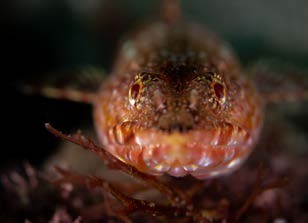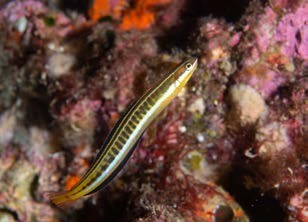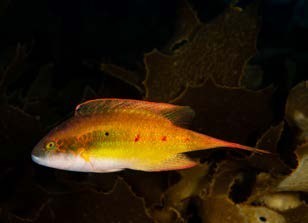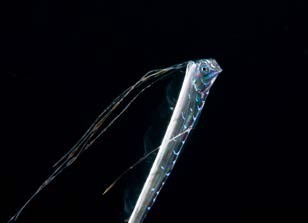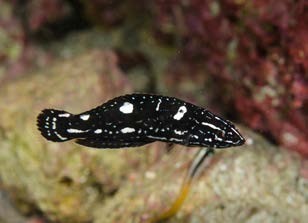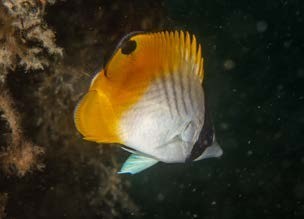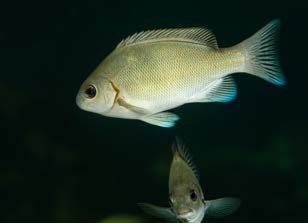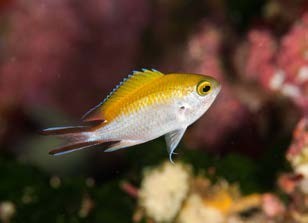TROPICAL AND SUBTROPICAL SPECIES IN NZ
WHAT MIGHT EL NIÑO TURN UP NEXT?
By Irene Middleton and Libby Liggins
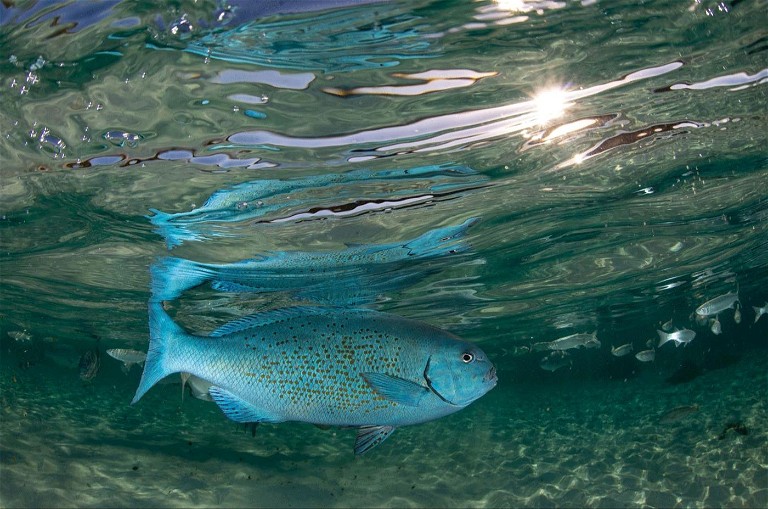
Bluefish (Girella cyanea) are one of the more common subtropical species that readers may encounter up north.
Photo: Irene Middleton,
.
Summer is well and truly here. Everywhere you look in the media there are predictions of heatwaves, droughts, and the return of El Niño.
NIWA meteorologists are forecasting a long, hot, dry summer and persistent westerly winds, and this El Niño cycle is predicted to be a belter – it will sit among the strongest El Niños seen in the past 80 years. Although east coast dwellers are looking forward to potentially more settled weather for boating, it does have us questioning the impact a shift back to El Niño, coupled with long-term changes in our oceans, may have on our marine ecosystem and fish communities.
Fishes are ectotherms. This means that their metabolism, growth, and activity levels are largely regulated by the temperature of the water surrounding them, and each species has an optimal temperature range. For example, tropical fishes do better in warm waters around the equator, and at the other end of the spectrum, only specialist fishes are adapted to living in holes in the sea ice of Antarctica.
This ectothermy, and the fact that many fish larvae and adult fish are highly mobile, means that they track shifting ocean temperature changes very closely. This is why we see a seasonal influx of some of the typically ‘warm water’ gamefish species such as marlin and mahimahi around New Zealand in the summer. But ‘non-target’ species like tropical wrasses, butterflyfish and gobies also regularly turn up in New Zealand, well outside of their typical homes on tropical coral reefs.
Although these seasonal or one-off visitors are interesting (and sometimes tasty), changes to water temperature and the shift or extension of fish ranges are generally long-term processes. A fish needs to make it to New Zealand in the first place, survive our cooler summers and then find a mate and breed successfully to become a permanent part of our fish fauna. Shorter-term climate events like heatwaves and the ENSO cycle (El Niño Southern Oscillation) can cloud our understanding of longer-term, gradual changes in fish ranges. Further complicating the picture is the fact that you need to know where fish ‘should be’ typically, and when they are turning up in places they ‘shouldn’t be’. Although researchers at Te Papa, Auckland Museum, universities and NIWA have been tracking fish communities for years, our coastline is massive, our fish fauna is super diverse, and the ocean is dynamic and changing all the time – this makes establishing that baseline, and detecting change, very challenging.
Te Papa regularly updates their list of New Zealand fishes in the national collection, and in 1999 Malcolm Francis from NIWA published a comprehensive summary of the tropical, new, and rare fishes that have been sighted in New Zealand. But keeping track of the entire fish community is nearly impossible for any one single organisation or scientist. Over the last four years, Dave Aguirre from Massey University, Tom Trnski from Auckland Museum, Malcolm Francis from NIWA and the two of us have worked together with other marine scientists and the New Zealand ocean-going public to catalogue the fish community with a focus on tropical and subtropical species. The goal was two-fold: set a baseline of fish diversity to understand how climate change might affect our fish communities; and show that people like you – fishers, divers, spearos and boaties – have a wealth of knowledge that can really help us scientists track change.
Over those four years, we gathered more than 1,700 records of 142 species of fish. These records came from soliciting sightings through our articles here in the NZ Fishing News, setting up the WhatsThatFishNZ Facebook page (https://www. facebook.com/WhatsThatFishNZ) and mining social media or fishing forums for existing images. The amalgamation of these records in and of itself was a huge result – they span over 50 years, extend from Nelson to North Cape, and give us a unique opportunity to understand the patterns of tropical and subtropical fish occurrences in New Zealand.
One of the coolest results was that we discovered 13 species that had never been recorded in New Zealand before and four that had only ever been seen at Rangitāhua/Kermadec Islands. When I say ‘we’ found these newto-New Zealand species, I really mean you guys did. All the records were from fishers, divers, spearos and photographers; all we did was bring them together and get a few verified by experts.
Although 17 new-to-New Zealand species might not sound like a lot, it is the largest single increase in the fish community records for New Zealand since Te Papa published its comprehensive set of fish books in 2015. And even Malcolm Francis’ paper which was focused on new and rare species only reported five new-to-New Zealand species. The species ranged from cryptic blennies to pufferfish, and wrasses to voracious coastal predators. I thought it might be interesting to share some of the more fascinating finds here.
A local fisherman, Nathan Cox, was fishing Houhora Harbour in Autumn 2020 when he brought up an unusual-looking lizardfish. Knowing it was something different he posted the pictures of his catch online and kept the fish frozen. The images made it through to the Whats That FishNZ Facebook page and the fish was identified as a painted grinner (Trachinocephalus trachinus). This weird, blunt-nosed lizardfish sits in wait, buried in the sand for its prey which are generally small fish and crustacean species. Their native range includes the tropical Indian and Pacific Ocean from Africa to Hawaii, with the closest known record being from the New South Wales coast in Australia. The fish is now part of the Auckland Museum collections and has been sampled for DNA to add to a national database of fish genetic sequences. Lizardfishes are generally pretty small, and the grinner is no exception, growing to only 22cm, but they tackle prey almost their own size, and they sport a pretty impressive set of dentures. Apart from this new species, New Zealand only has three known lizardfish species so finding a new species in this family is significant. The fact this species is so cryptic might mean it could easily have gone undetected if it wasn’t for the far north specimen and quick thinking from the fisherman to keep the fish in the freezer.
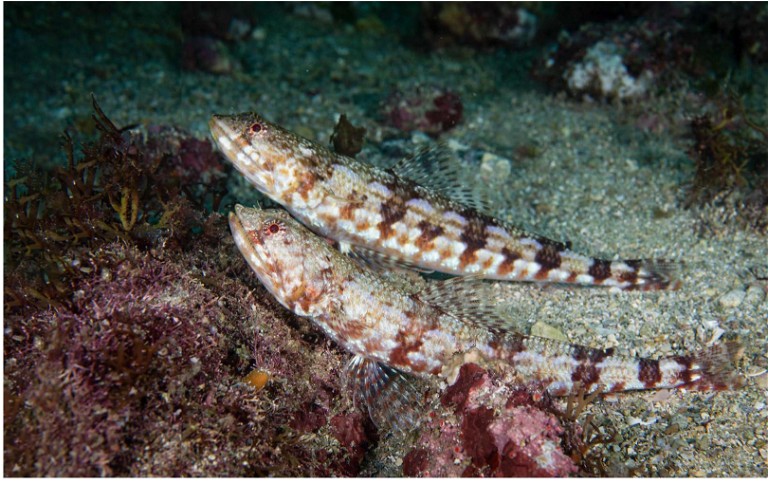
A pair of New Zealand native lizardfish at the Poor Knights Islands.
Photo: Irene Middleton,
.
“ …THIS EL NIÑO CYCLE IS PREDICTED TO BE A BELTER – IT WILL SIT AMONG THE STRONGEST EL NIÑOS SEEN IN THE PAST 80 YEARS. ”
Sometimes known as the ‘Poor Man’s Gamefish’, tailor (Pomatomus saltatrix) are an important target species for landbased fishers around Australia. When a photo of one popped up on a fishing.net. nz forum in 2012 it caused quite a stir! The fish was caught near the Cavalli Islands in Northland and posted to the forum for identification. Although they superficially resemble kahawai, it was quickly evident to the forum community members that this was something unique. Tailors are voracious predators that occur in schools and are known to attack anything that moves. Although they do occasionally stray out to oceanic waters, they are usually found close to shore in Australia, South Africa and the USA where they are most common around rocky headlands. So, the journey across the Tasman is a big, but not unprecedented, one for a mobile predator like this!
The processes by which coastal species like this cross large expanses of open ocean are still poorly understood; they could swim across, drift with debris, or ride ocean currents as larvae. Since the first record in 2012, Te Papa has recorded a few more sightings of this species so it’s certainly one to watch out for when you are fishing around northeastern New Zealand.
The two previous species had to make long treks across the Tasman from coastal Australia and islands like Norfolk and Lord Howe. Although that is a feat in itself, the next species makes that look like child’s play. A local spearfisher had gotten wind of a weird stripey fish hanging around his home reef northeast of Auckland in 2018. Assuming it was a Lord Howe coral fish or similar, he went for a dive to check it out. It turned out to be a ‘tsunami fish’, more commonly known as a knifejaw (Oplegnathus fasciatus).
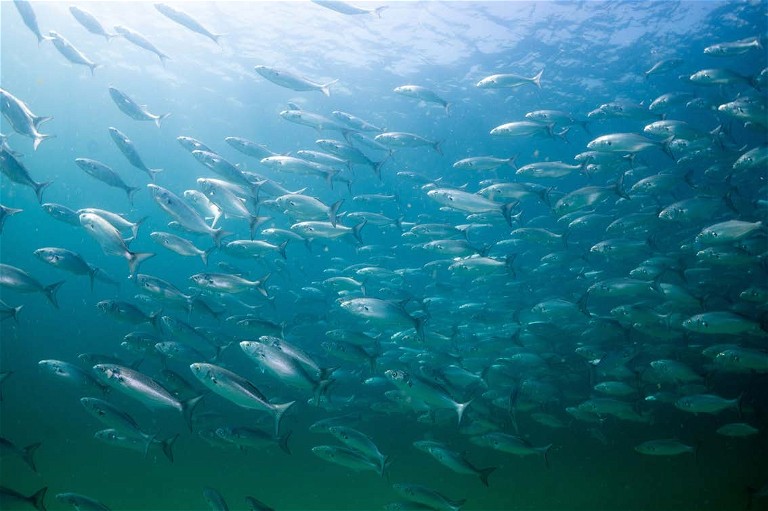
A school of tailor from Cabbage Tree Bay in Australia. Image: John Turnbull.
This species is generally found in the north-western Pacific, and is endemic to Japan, so it was a long way from home. It received the moniker ‘tsunami fish’ after two individuals were found in the wet wells of tsunami-wrecked derelict vessels that had drifted from Japan to the west coast of the USA over a period of two years! Juvenile knifejaws are often associated with debris and some have even made their way into the Mediterranean Sea in sea chests or ballast water. It’s pretty safe to assume that the New Zealand specimen shot off the Leigh coast had also hitchhiked or drifted with debris or a vessel south to New Zealand. Since its discovery in 2018, only one other knifejaw has been seen, on a rock pinnacle in the outer Bay of Islands in 2023 during a spearfishing competition. It would be interesting to better understand just how species like this survive the long open ocean journeys and if storm events or cyclones contribute to them turning up in areas outside of their known range.
Although interesting for the fish nerds among us, the species above may not get the everyday fisher and spearo overly excited, but one range-shifting species I know gets all of our blood pumping is mahimahi (Coryphaena hippurus). I know mahimahi in New Zealand is old news, but our data suggests that this is one species that is extending further and further south. As part of our research, we asked a team of scientists, fishers, spearos and divers to help us define what the known range for species like mahimahi is and they defined an area that encompassed the coast from Cape Egmont around North Cape down to the Mahia Peninsula. Over the last two years, we had multiple sightings of mahimahi outside of the range defined by the expert panel and the traditional ‘game season’. For example, videos and photos of schools of mahimahi were sent to us from Napier and the South Taranaki Bight. And earlier this year a large, fresh mahimahi bull was found dead in the wash zone on a beach even further south on the Kapiti Coast. The fact that schools of reproductive-sized fish have been seen south of their traditional range and outside of their usual season in New Zealand supports the fact that this may be one of the ‘tropical’ species that is actually undergoing a range extension within New Zealand in response to long-term climate change.
Our combined efforts in recording tropical, rare and subtropical fishes in New Zealand were published in the scientific journal called the Journal of Biogeography. The list of authors features some of New Zealand’s most well-known fish boffins as well as the fishers, divers and spearos who contributed new species records and data. This goes some way to recognising the contribution that oceangoing New Zealanders have to our understanding of the marine environment and that you should not discount the value of your own local knowledge and powers of observation.
However, it’s not just tropical and subtropical species that are shifting their ranges around New Zealand. Media releases and sightings by fishers and spearos suggest that snapper are becoming more common in places like Dunedin and Fiordland. And it’s not only the places species are being sighted, but also when. For example, kingies were seen almost year-round in Fiordland last year, which is a significant extension in their seasonal range. Although this may be good news for southern fishers, we also need to make sure we are able to track changes in the northern or warmer parts of species ranges. Will we start seeing less snapper in the north? Or will they move to cooler deep water in the northern parts of their range? Will kingies only be found in Northland in the winter? Will a tropical surgeonfish or wrasse start competing with butterfish for food resources? Or will a tropical predatory fish totally change the food-web in northern New Zealand? Searching for new and rare species and understanding these sporadic occurrences and pulses of change over time is like searching for a needle in a haystack, but it’s important. And accurately identifying range shifts requires long-term observations across the extent of New Zealand’s coastline, which is only possible as a team effort.
“ WILL WE START SEEING LESS SNAPPER IN THE NORTH? OR WILL THEY MOVE TO COOLER DEEP WATER IN THE NORTHERN PARTS OF THEIR RANGE? ”
Although this started as a PhD project, our research team is committed to the long-term data collection that is needed to identify new species and range shifts of fishes in New Zealand. To that end, the WhatsThatFishNZ Community and Facebook page is active and we will keep maintaining our database of sightings – the work is never done! We’re interested to see what this next summer brings so keep your eyes peeled and send any interesting, weird, out-of-theordinary or out-of-season fish sightings through to us!
The data and the scientific article are available to anyone interested from the Journal of Biogeography website.
Turn the page to check out more weird and wonderful tropical and subtropical vagrants to NZ!
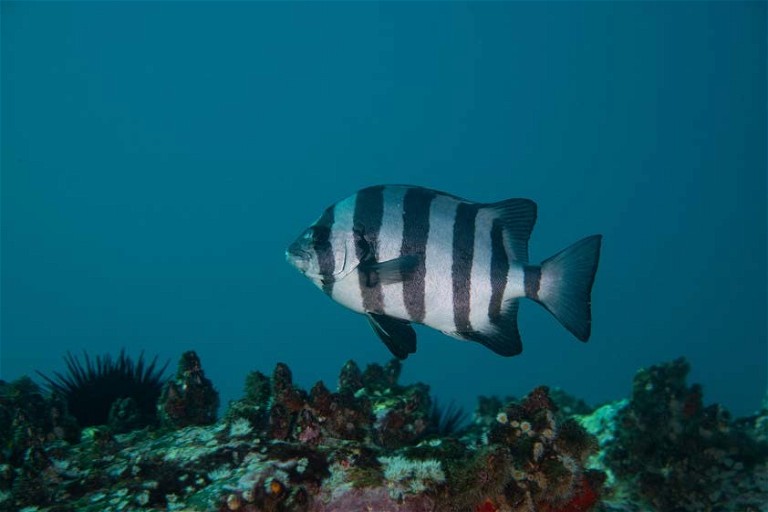
A knifejaw from the Bay of Islands. Photo: Crispin Middleton, seacologynz.com.
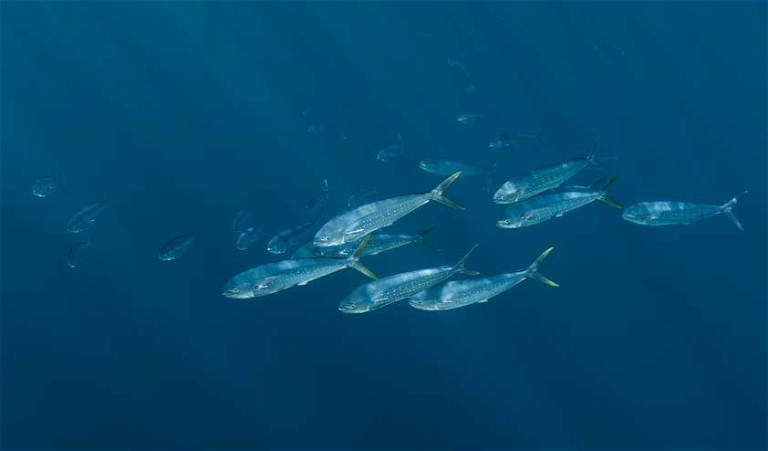
School of juvenile mahimahi from northern NZ. Photo: Irene Middleton, seacologynz.com.
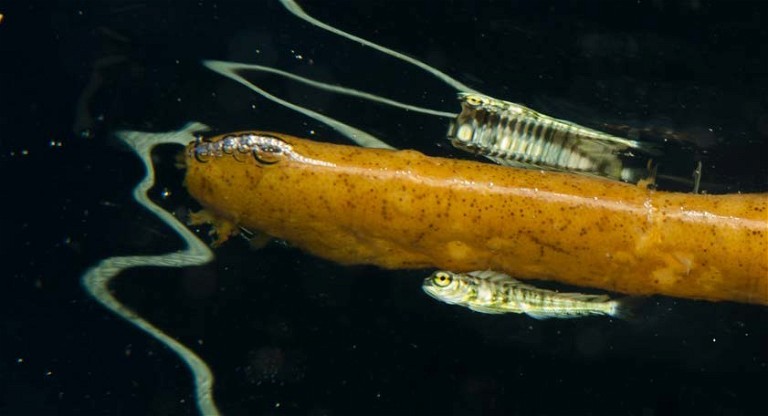
Juvenile mahimahi in flotsam. Juveniles turn up in pulses sporadically outside of the gamefishing season. Photo: Irene Middleton, seacologynz.com.
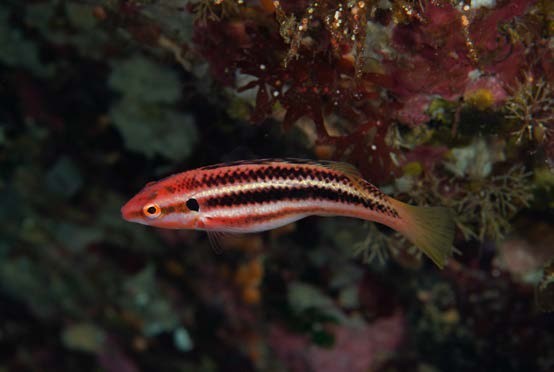
Bodianus izuensis, a Japanese relative of our pigfish that has been seen a few times at the Poor Knights.
Photo: Irene Middleton,
.
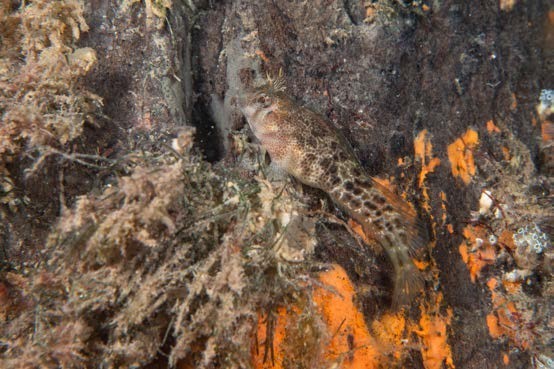
This blenny was a new-to-NZ species that was found on a wharf in Parengarenga Harbour, showing that not all of the new species are at the Poor Knights!
Photo:
Crispin Middleton,
.
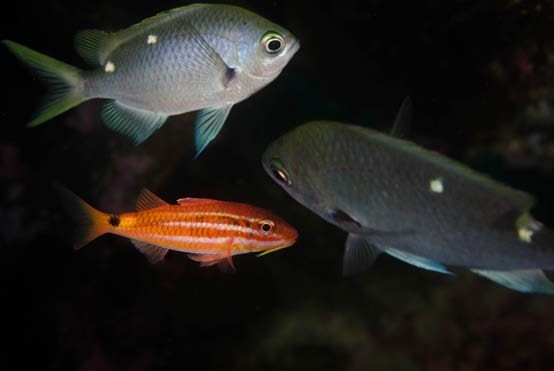
Blackspot goatfish (bottom left), becoming more common and larger, are overwintering in northern NZ now.
Photo: Irene Middleton, seacologynz.com.
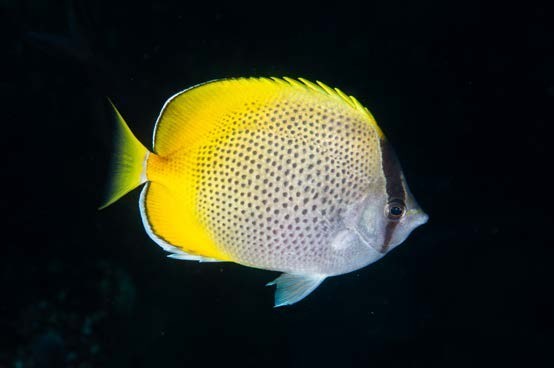
Mature Gunthers butterflyfish.
Photo: Irene Middleton, seacologynz.com
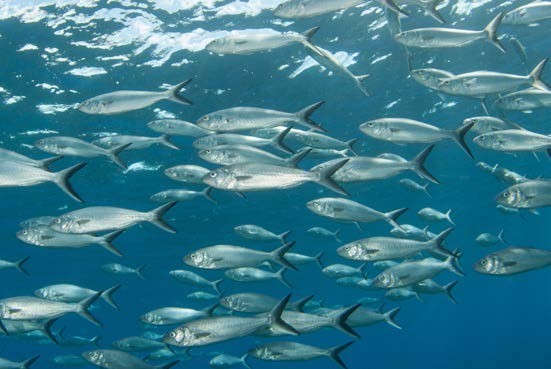
Northern (Kermadec) kahawai are occasionally caught by anglers in the far north and grow larger than common kahawai.
Photo: Irene Middleton, seacologynz.com.
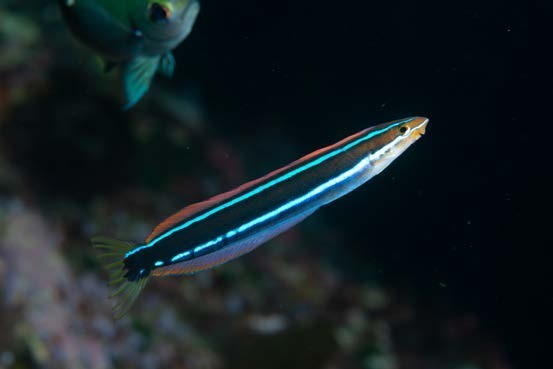
The fang blenny is a new-to-NZ species in the paper.
Photo: Irene Middleton, seacologynz.com.
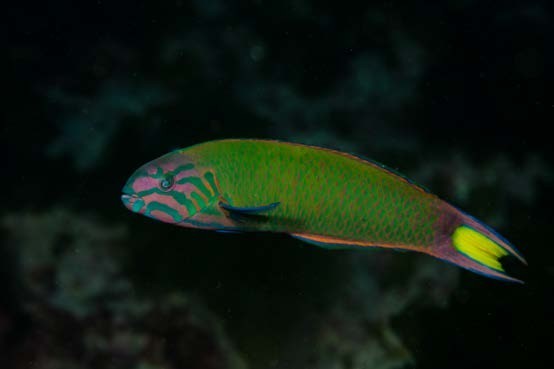
Moon wrasse.
Photo: Irene Middleton,
.
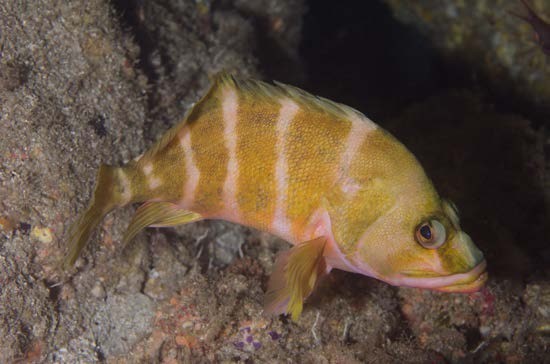
Eyebrow perch.
Photo: Irene Middleton, seacologynz.com.
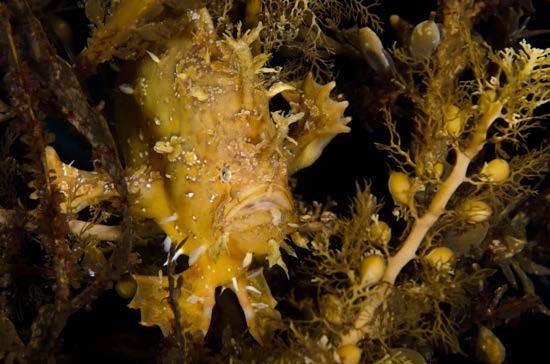
The quirky sargassum fish.
Photo: Irene Middleton, seacologynz.com.
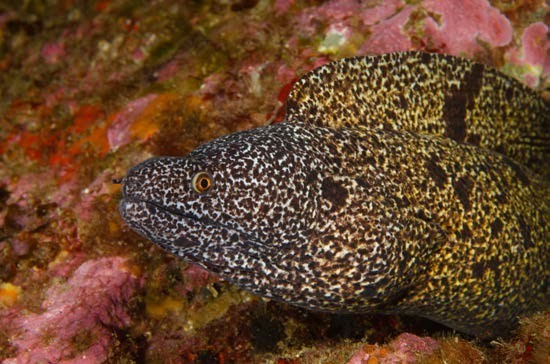
Lord Howe moray in the Bay of Islands.
Photo: Irene Middleton, seacologynz.com.
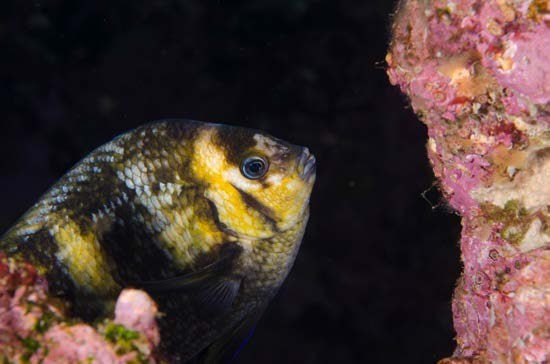
Norfolk Island scalyfin in Northland.
Photo: Irene Middleton, seacologynz.com.
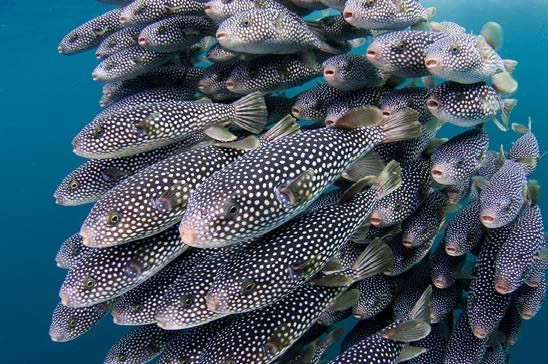
A school of starry toado, a pelagic pufferfish, at the Poor Knights.
Photo: Crispin Middleton, seacologynz.com.
